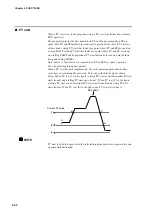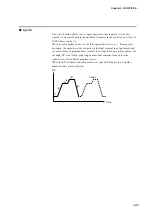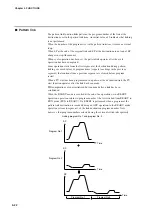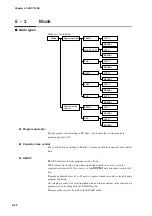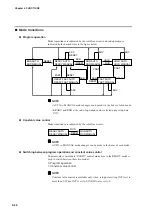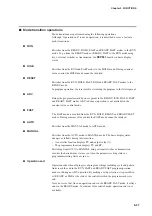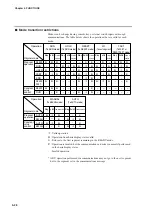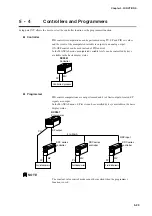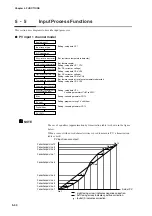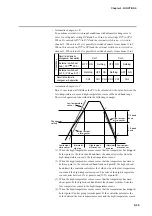
5-34
Example 3:
(1) When the high-temperature sensor senses that the temperature has risen to
changeover point A, the channel switches from the low-temperature to the
high-temperature sensor.
(2) When the high-temperature sensor senses that the temperature has risen
above the upper limit of the dead band and reached point B, the channel
switches from the high-temperature to the low-temperature sensor at
changeover point C.
(3) No switching is performed at changeover point E when the high-
temperature sensor senses that the temperature has only dropped to point D
and has not gone below the upper limit of the dead band.
(4) When the high-temperature sensor senses that the temperature has reached
point F at the upper limit of the dead band, the channel switches from the
high-temperature to the low-temperature sensor at changeover point C.
Example 4:
(1) When the high-temperature sensor senses that the temperature has risen to
changeover point A, the channel switches from the low-temperature to the
high-temperature sensor.
(2) When the high-temperature sensor senses that the temperature has risen
above the upper limit of the dead band and reached point B, the channel
switches from the high-temperature to the low-temperature sensor at
changeover point C.
(3) When the high-temperature sensor senses that the temperature has dropped
to point D the lower limit of the dead band, the channel switches from the
high-temperature to the low-temperature sensor at changeover point E.
A
B
C
+
–
1/2 dead band
1/2 dead band
Changeover
setting
Low temper-
ature sensor
High temper-
ature sensor
Low temper-
ature sensor
High temper-
ature sensor
Low temperature
sensor
D
E
F
High temper-
ature sensor
Chapter 5. FUNCTIONS
A
B
C
+
–
1/2 dead band
1/2 dead band
Changeover
setting
Low temper-
ature sensor
High temper-
ature sensor
Low temper-
ature sensor
High temper-
ature sensor
Low temperature
sensor
D
E
High temper-
ature sensor

